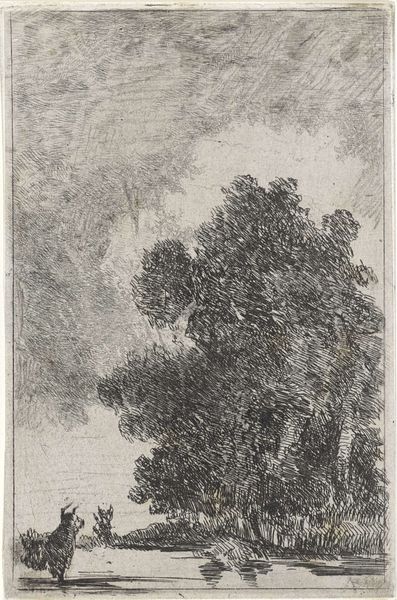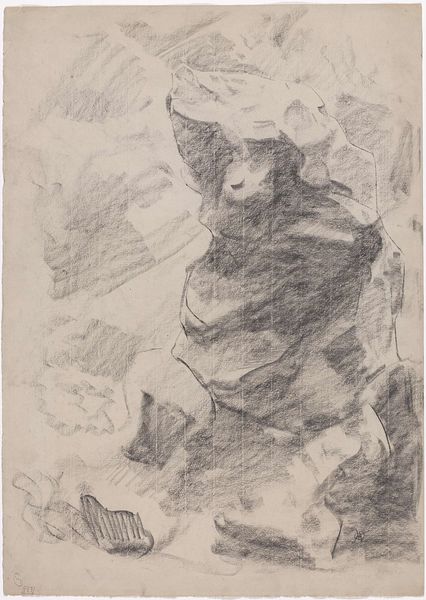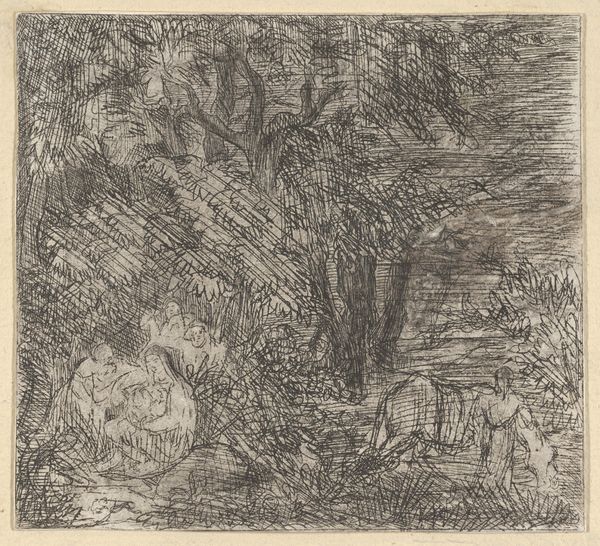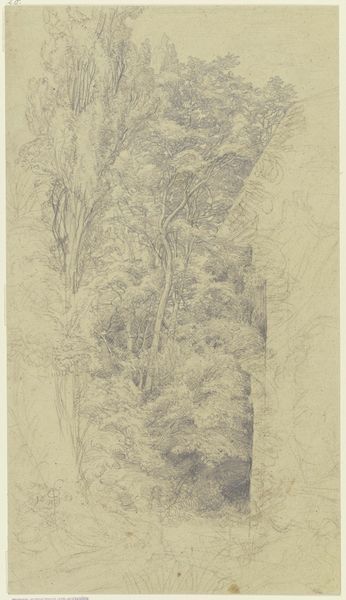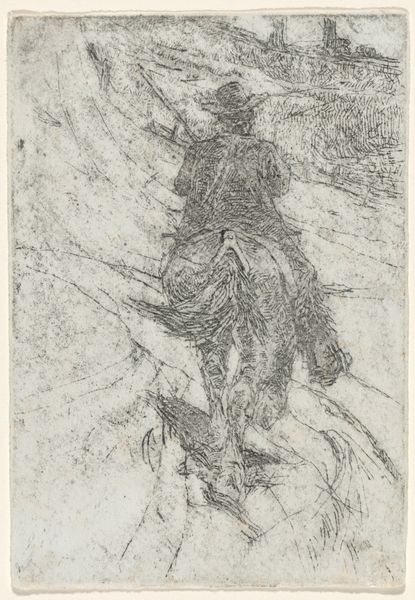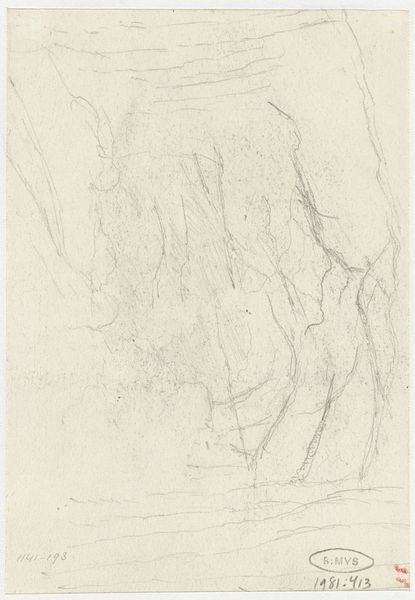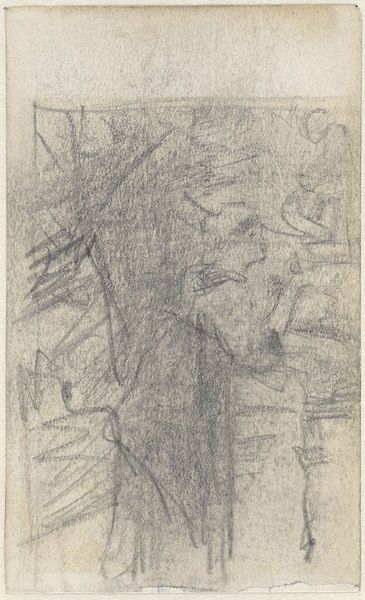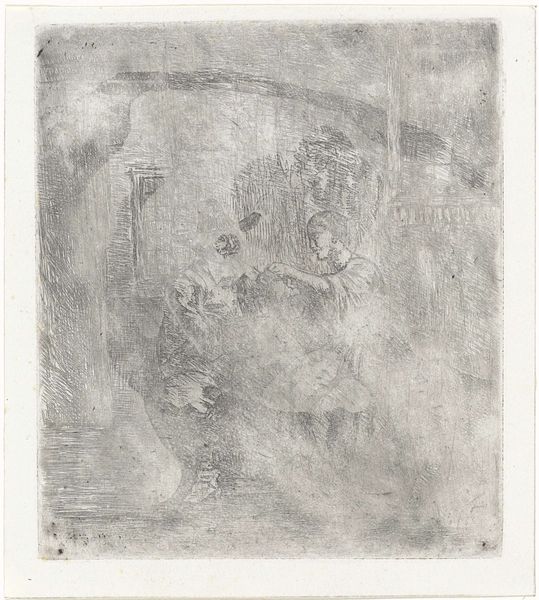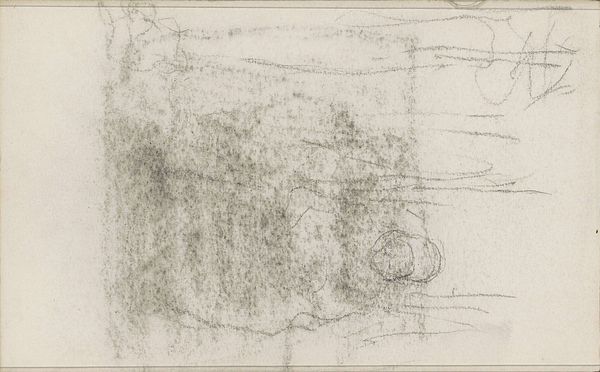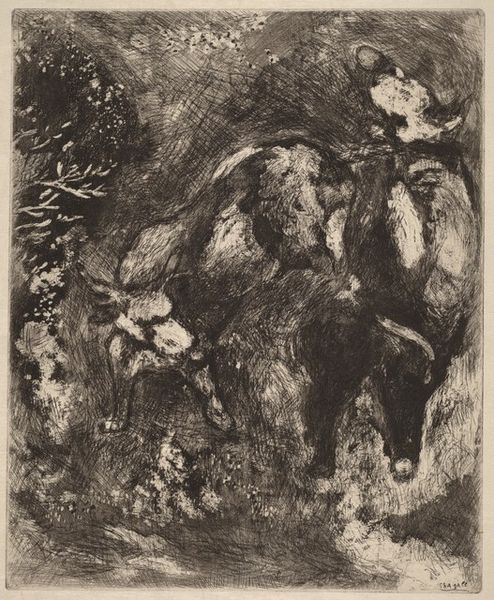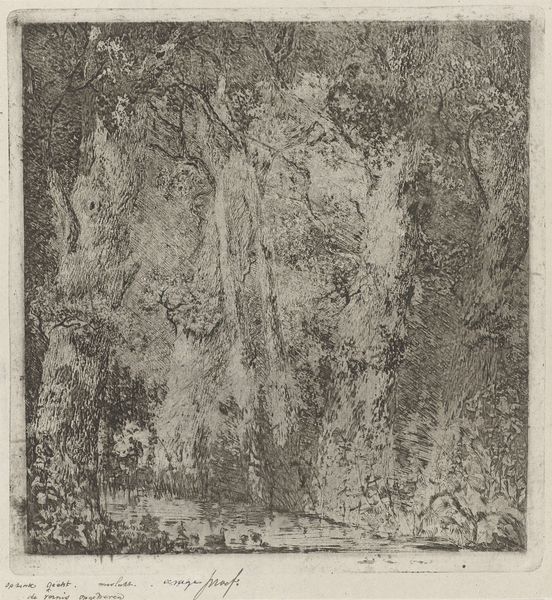
etching
#
impressionism
#
etching
#
landscape
#
etching
#
figuration
#
line
Dimensions: height 185 mm, width 131 mm
Copyright: Rijks Museum: Open Domain
Editor: So, this is Matthijs Maris' "Vrouw onder een boom," or "Woman under a tree," made between 1887 and 1888. It’s an etching, which gives it this delicate, almost dreamlike quality. I find the textures captivating, how the lines build up. What strikes you most about the material and method here? Curator: The etching process itself is key. Think about the labour involved. Maris meticulously scratched lines into a metal plate, line by line. This wasn't about a quick impression, but a slow, deliberate accumulation of marks. The final product, printed on paper, speaks to a system of production—the artist’s hand, the press, the availability of materials, each impacting the outcome. How does knowing it's an etching change your interpretation, compared to, say, a painting of the same subject? Editor: I suppose it shifts my focus to the process… the intentionality behind each line. It feels almost industrial in its method, creating something intricate from repetitive actions. Curator: Exactly. And that deliberate mark-making pushes against notions of innate talent. We are not just admiring some kind of 'gift,' but considering skill that relies on repetition, tools, and, ultimately, labor. Consider what kind of paper Maris chose and why, also how widely it was circulated after being produced. Were these images precious artworks for the wealthy, or for consumption by a broader public? Editor: That’s interesting! Thinking about it, etching allowed for multiples... it wasn't just a single precious piece. It changes how you understand its purpose, its role in society. It’s less about unique artistic genius, and more about access and circulation of images. Curator: Indeed. We begin to question the established hierarchy separating 'high' art from practices embedded in material production, considering instead the cultural life these prints acquired through circulation and use. Editor: I never thought about it like that, about how the "means" influences the "meaning." Curator: Well, art doesn't just exist in a vacuum, does it?
Comments
No comments
Be the first to comment and join the conversation on the ultimate creative platform.

